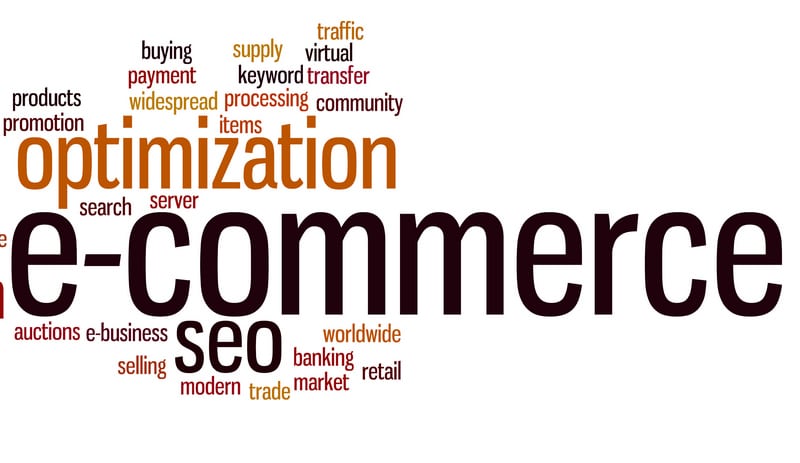Ecommerce SEO issues that local websites need to avoid
As more and more people emerge from the pandemic driven quarantine, many local business owners are breathing a sigh of relief. Finally, business will get back to normal many business owners are thinking. But will they? According to a study by Accenture, most consumers will maintain many of their pandemic inspired shopping habits after the crisis has abated. That includes most habits related to digital shopping. That means that local businesses considering entering the world of ecommerce shouldn’t shelve those plans now. Ecommerce SEO should be part of that plan.
E-commerce sites that generate organic traffic sell more and save more. Organic searches are purpose-driven. People search for specific items they need or want now. Those searches are performed on mobile devices. Often times they are location specific and time sensitive. These searchers want to give you their business. Online stores that can drive search-based traffic to their pages are well-placed to sell. Better still, they need to spend far less on ads.
Ecommerce SEO strategies shares some similarities with optimizing a blog or a website. However, tweaking SEO for an online store with hundreds or thousands of products can get tricky. There are pitfalls to avoid. Avoiding the most common ones will get you a long way towards becoming an ecommerce success
The four most common Ecommerce SEO issues that local businesses must consider.
-
Improper product descriptions –
- Product descriptions that are too “inspired” by the content on the supplier’s site are a bad idea. By this we mean too much fluff and not enough pertinent information. Google will show the product page that is packed with useful information over a fluff page every time.
- Be consistent in the design of your product pages. Inconsistency in style may result in the improper placement of keywords or missing keywords altogether. It can result in poor copy that doesn’t answer all the questions a prospective buyer may have.
- Writing descriptions blindly while failing to address the buyer’s mindset is the opposite of inconsistent content. You need to know where to get creative while ensuring that technical details get highlighted.
- Not using good quality images or using too few images. Improper image usage robs you of the opportunity to excite customers. Time spent on a website is an SEO metric. Quality images keep customers on the page. While we’re on the subject of images, don’t forget Alt tags. many businesses do. Accurate alt tags help Google understand the context of the page better.
-
Not realizing the value of product reviews –
- If you’re not encouraging product reviews, you’re missing a big SEO trick that works. It’s an opportunity to rank for “product name + review.” Consider the scope for organic traffic with this in mind for a page properly tweaked for SEO. All product pages should ask for and post reviews. Reviews, good ones and bad, should be responded to if possible.
- Customers lose interest in posting reviews if the process is cumbersome. It’s an opportunity lost to produce user-generated content that may contain important and valuable keywords. Product review pages are easier to rank for than pages that sell.
- The absence of reviews is an opportunity lost to benefit from social media. Reviews can find a way online and may get discussed. There are potentially powerful backlinks in the offing here.
-
Don’t ignore unbranded keywords –
- Optimizing each product page for keywords can be a chore. Focusing only on branded keywords for optimization is a mistake. Product attributes such as color, size, materials, performance, etc., serve as keywords for searches. These must be judiciously included in the copy to attract the interest of the search engines.
- Neglecting what the competition is doing with the URLS, H tags, meta tags, and alt tags is another common mistake. It blunts the edge of any keyword-related strategy that you may want to implement. Some effort to study what’s ranking and why can save you tons of useless effort and marketing money.
- Don’t fall to the lure of focusing too hard on the money keywords at the expense of informational keywords. The latter is far easier to rank for and they drive organic traffic.
- Rushing into site redesigns without considering SEO –
- Site redesign that does not take into account SEO can hurt an e-commerce site in a big way. Rankings can suffer, traffic drops, and earnings vanish. Consulting an SEO expert before and during the site build will save time, money, aggravation and disappointment.
- Make sure all the content form the old site is moved to the new one. Pages that served as the drivers for traffic may actually get deleted or lose pieces of valuable content. Other pages may link to the missing pages. This is bad for SEO and provides a frustrating user experience.
- Redesign can often result in duplicate content, resulting in penalties. Refreshing a site is a good idea from time to time but rushing through a redesign can be catastrophic without considering the impact on SEO.
For most local businesses, getting online with an ecommerce store is a no brainer. Choosing the right ecommerce platform depends on budget, products, ease of use and other factors. But the times are changing and it behooves a local business owner to get ahead of the curve. Most pandemic shopping habits are not going away.
